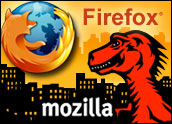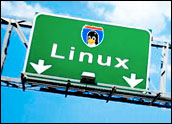
Linux has come a long way from its hobbyist roots. The open-source operating system has certainly gotten the attention of enterprises, governments — and mighty Microsoft.
This year saw the typical backbiting between proprietary and open software camps as Linux continued pushing its agenda. It also saw a blossoming adoption of open-source technologies as the industry began to address indemnity and patent issues.
What does 2006 have in store for Linux? LinuxInsider asked Dr. James Bottomley, the gatekeeper of the Linux Kernel SCSI Maintainership, to make some predictions about Linux in the new year. Dr. Bottomley is chief technology officer for SteelEye Technology, a company that provides data and application availability management solutions for business continuity and disaster recovery in Linux, Windows and Unix environments.
LinuxInsider: What are the key positive Linux trends you are seeing as we head into 2006?
Dr. James Bottomley: There is an ever-increasing number of enterprise applications available for Linux; some are closed source products that have been ported over from Unix and others are based on open-source technology that has been developed following the Linux model.
The delivery of Xen support within the distributions will accelerate use of virtualization. And “dm” emerging as a standard for multi-path storage support will help ease deployments for large customers. Large public-sector deployments will continue in Europe.
The introduction of low-cost desktops running Linux and open-source user productivity tools is also a positive trend with the potential of making technology more economically accessible.
LinuxInsider: What is driving those trends?
Dr. Bottomley: Demand placed by larger customers and more complex environments is driving the need for higher-end applications, server and storage support. Companies are going into an IT upgrade cycle and are looking to Linux for the TCO savings.
As Intel “commodity” systems continue to close the performance and scalability gap with RISC (Reduced Instruction Set Computer) systems, higher performance workloads can be migrated to “Lintel.” Dual-core systems are one example.
LinuxInsider: What makes those trends so significant? How will they change the Linux landscape?
Dr. Bottomley: The trends are significant because they demonstrate accelerated enterprise adoption of Linux. As more enterprise deployments occur, more knowledge and momentum are gained, and that feeds additional deployments.
LinuxInsider: What about any negative trends in the Linux world? What are the currents working against the platform?
Dr. Bottomley: The only real trend working against the platform is the desire of companies to build proprietary extensions. The greatest level of this threat is apparently coming from India. All indications are that it will be neutralized in the long term by active enforcement of the GPL and other defense mechanisms like the patent commons projects and education about the merits of the open Linux development process.
LinuxInsider: How are other open-source technologies helping Linux adoption?
Dr. Bottomley: The adoption of open-source technologies like Apache within an organization increases its receptiveness to considering other open-source solutions, and hence helps with Linux and a lot of other open-source deployments. Most open-source deployments are begun initially from the bottom of the organization, not the top. Thus, when open-source solutions are observed from the top, they are usually successful and thus serve as a positive example for the official adoption of open-source solutions.
LinuxInsider: Who is migrating to Linux these days?
Dr. Bottomley: Anecdotal evidence seems to suggest that more non-English speaking countries in the European Union, Africa and Asia are migrating than the United States and United Kingdom.
LinuxInsider: What is driving the migrations? Are there different reasons today than there were some years ago?
Dr. Bottomley: Not really, it’s still mainly people looking for robustness and a return on investment.
LinuxInsider: How is Linux impacting how software is designed?
Dr. Bottomley: This impact is the hardest of all to detect. However, there has been a shift to greater openness and some small embrace of the Linux methodology for development: release early, release often and engage with the Linux community early.
LinuxInsider: Has Linux reached its inflection point?
Dr. Bottomley: The inflection point in terms of server sales was reached long ago. In terms of total operating-system sales, including the desktop, no, it hasn’t. The desktop inflection point is being pushed by a variety of high-powered and interested organizations, like Novell and the Desktop Consortium — but, realistically, it won’t be reached until 2007 at the earliest.
LinuxInsider: What are the biggest challenges for Linux going forward? How will the platform overcome those challenges?
Dr. Bottomley: Probably the greatest challenge is the availability of good device drivers and their release under the GPL and Linux development methodology before the shipping date of the hardware.



















































